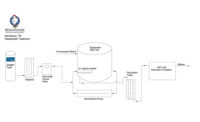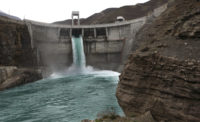In 2008, Koel Thomae and Rob Graves co-founded the Noosa Yoghurt brand, which paired over 100 years of family-operated dairy farming experience in Bellvue, Colo., with a unique Australian yogurt recipe.
In less than 10 years, Noosa has expanded its product line in terms of flavors and tub sizes, and maintains annual sales of over $100 million. However, increased demand for Noosa products resulted in progressive increases in wastewater generation. The plant had previously mixed wastewater with cow manure and land-applied as fertilizer, however, this method of wastewater disposal became unsustainable. That’s why Noosa sought a feasible method for treating its high-strength wastewater.
In 2014, Noosa used a series of criteria to help select the appropriate treatment technology, which would discharge final effluent to the local Poudre River. Of primary importance, Noosa wanted a robust, resilient treatment system that would consistently generate a final effluent to meet the direct discharge limits for biological oxygen demand (BOD), total suspended solids (TSS), fat, oil and grease (FOG), total nitrogen (TN) and total phosphorus (TP). In anticipation of future increases in production, Noosa sought a system that would be easily expandable to handle future increases in wastewater generation. This would allow Noosa to spread out capital expenditures for wastewater treatment over several years. Furthermore, the treatment system would need to be adaptable to handle potential changes in imposed direct discharge limits resulting from an increase in permitted discharge flow.
In addition to these considerations, the selected treatment system would need to address the many challenges associated with treating wastewater generated from industrial dairy plants, as they typically generate wastewater with high concentrations of BOD, TSS and FOG, which can disrupt the stability of a treatment process. In-plant cleanings of vessels and processing equipment are typically conducted several times per day, resulting in significant changes in hourly flow to the pre-treatment plant. Cleaning and disinfection chemicals used during cleaning operations, which are subsequently discharged to the pre-treatment plant, can contain high concentrations of compounds, which if present in sufficient quantities, can be toxic to the biomass used to treat the wastewater. Furthermore, high concentrations of calcium in the wastewater can cause scaling of the surfaces of treatment tanks, piping and equipment.
After an extensive technology search, Noosa elected to install an aerobic MBR system from Evoqua Water Technologies, Pittsburgh, Pa., with the system designed and installed in phases. The treatment plant installed in Phase 1 would treat a design wastewater flow of 300 m3/d, and the system installed in Phase 2 would be designed for biological nutrient removal (BNR) and treat a design wastewater flow of 600 m3/d.
CLICK HERE to read more.



